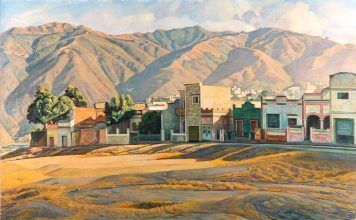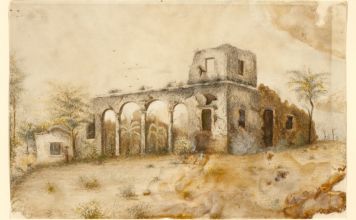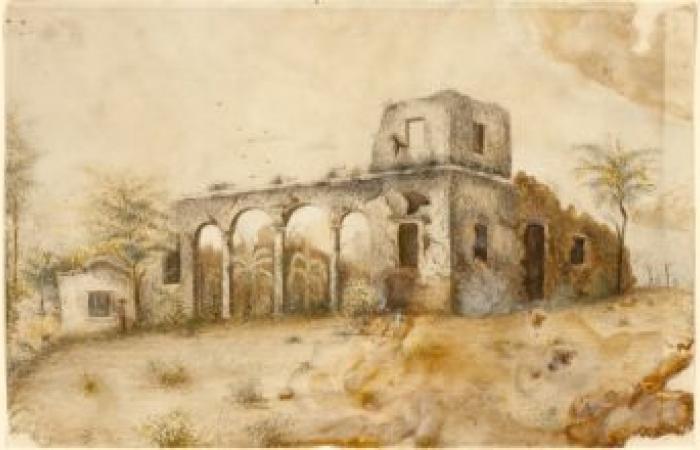The four titles published by the Journal Communication are recorded here, summarily
By Daniel Pabón
In the most recent half of the half century of Communication, The team has published four books. If we rummage a conductive thread, we will find that everyone seeks to document the contemporary communication fact; that as a whole they strive to tell the future of the discipline. Perhaps they constitute a theoretical framework that has the magazine (intentional cacophony), in times when the theorization merits just claims from the spaces of knowledge. Let’s divert this by pieces:
I a necessary GPS
Year 2010. Times of the second closure of RCTV, of the expropriation of France and the declaration of the national Electric Service in an emergency state. To commemorate 35 years of Communicationit was published Communication practices and crossings in Latin America. Recognizing the dispersion of communication studies and its multiple mediations, this “manual-text” sought to summarize regional and national research findings with the approach placed in the sociological.
“Why one more manual at the Internet time?” Asks the book just to open it. After nine essays, the answer is clear: this contribution to the current of glocal reflection on the theories and analysis of Latin American space such as the economy of communication, media representations, reception and audience studies, cultural consumption, organizations, democracy and new technologies was necessary.
II THE MOST INASIBLE CLOUD
Being Communication Quartentona, left printing Crossroads of Communication in Venezuelacompiled by Marcelino Bisbal and Jesús María Aguirre. Bisbal tells the two concerns that had been fixed with this title: filling a black hole in the joint vision of the status of the media and networks in the country that was useful in the eyes of any professional, and providing with a new tool the teaching function of the communicators and social media managers.
Year 2015. Long rows for food. The opposition crown with votes the National Assembly. But and in the communicational field? Two scenarios ran that this book twinned: on the one hand, technological transformations that followed in the field of communication with an incidence in cultural reconfigurations and, on the other hand, the changes from the foundations of the political, the economic and the social, with their respective effects on the communication discipline.
The crossroads of the book led to ideas like this: Internet overflowed us, how do we manage it? No human being, or dedicating his entire life, can consume everything up to the cloud, where we somehow coexist coexisting a digital public space.
III This landscape was complex
To celebrate 45 years, in 2020 it was published Think communications today. Trends and attributes. That was an immersion in the central social place of digitalization and communication and information technologies. A dozen authors agreed on the effort to reflect the new aesthetic-social experience of the inhabitants of the world.
Deep dissertation of this work, describing the changes of the communicative ecosystem to the compass of new technologies. Terms such as cybercrucuidadanos, hypermediations, cultural hybridization and philosophical posthumanism are put in these pages. The density of this new cultural landscape is provided by the main authors of this time: Castells, Lévy, Bauman, Turkle, Martín-Barbero, García Canclini, Scolari … These pages weigh.
The social relevance of this publication responds to a context as complex as porous. New ways of being together. Deterritorialized cultures. A communicative ecosystem configured by new ways of learning. The world became hybrid. These and other symptoms of emerging society were, fortunately, special emphasis in Latin America and Venezuela, by the hand of a pool of high -size researchers who populate the 11 chapters of the work.
IV Once Real
The fourth and most recent book still smells like a printing press: in October 2024 he finished editing From truthful fiction. Imaginary interviews about communication and culture. The Bisbal-Aguirre duo, again, coordinated this equally collaborative production on this genre so challenging and apparently neglected in the journalistic bibliography.
In almost 250 pages there are 13 copies of this subgenre that Aguirre understands as “double fictional likelihood.” Because? The 13 authors pretend to meet again in space and time with their interviewees, all killed to date, in illusory scenarios. Always, yes, respecting in detail the intellectual coherence of each.
“From truthful fiction” is, in two dishes, a tribute to 13 of the main communication researchers in the Venezuelan twentieth century. From the militancy of the discipline that Héctor Mujica (1927-2002) always practiced, in a life told “under the sign of the news”, to the visionary intellectual that was Margarita D’Amico (1938-2017), descriptive of this hypermediatic “bohemia” that surrounds us.
It turns out that this fourth book Abroca, in a certain way, the previous three. The contents offered by those (together with the articles of Communicationof course) served as raw material for this. And, with that input, the 13 co -authors did not stay in a discursive representation, but they built a more creative work: we imagine them and, imagining them, we bring to the present fields of study as constitutive of communication as journalism, photography, public relations, corporate communications, semiology, public opinion and alternative communication.
These four books, reviewed here in thematic-contextual perspective, are modeling an open dissertation, of more than 1,000 printed pages under more than 30 collaborating signatures. They are testimony that the communication now in Venezuela now has who tells it.
* Daniel Pabón is a journalist. Member of the magazine’s writing council Communication.
Related news

mayo 3, 2025

mayo 3, 2025

mayo 3, 2025

April 27, 2025

April 27, 2025

April 27, 2025
Independent journalism needs the support of its readers to continue and ensure that the awkward news that you do not want you to read, continue to be at your fingertips. Today, with your support, we will continue working hard for a journalism free of censures!Support El Nacional













